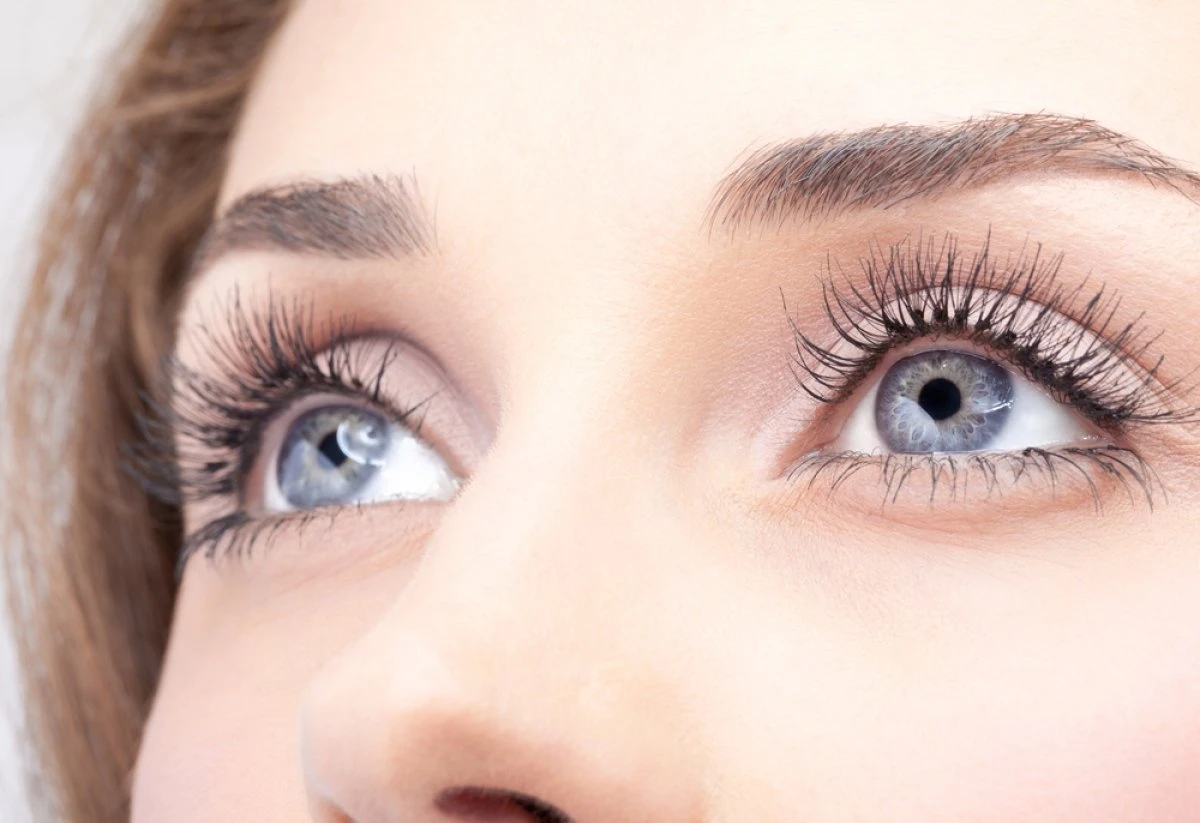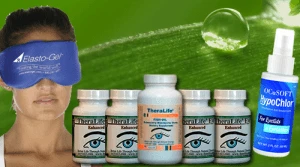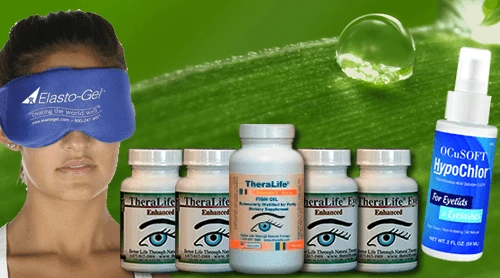For effective blepharitis relief, consider using TheraLife’s products, which provide reliable and soothing solutions. Their offerings include microwaveable or medical-grade compresses that deliver consistent warmth, with an optimal temperature range between 40°C and 45°C to ensure safety and prevent injury. These compresses are designed to be used twice daily for 5–10 minutes, utilizing a clean, hypoallergenic cloth to enhance the experience.
After applying the compress, TheraLife’s products encourage gently massaging your lids and using their sterile pads along with preservative-free cleansers to maintain eyelid hygiene. They recommend avoiding unnecessary additives and adhering to strict hygiene practices. For those with sensitive skin, their products include non-abrasive fabrics that cater to delicate needs.
TheraLife’s comprehensive approach to blepharitis relief ensures that customers can master these steps, thereby optimizing their overall eye care routine. Their range of products not only offers relief but also supports long-term eye health, making them a valuable resource for those seeking effective and natural blepharitis treatments.
Best Blepharitis Treatment From TheraLife- When Drops Don’t Work.
Key Takeaways
- Use a microwaveable mask or reusable gel pack for stable, long-lasting heat instead of a regular washcloth.
- Ensure compress temperature is between 40°C and 45°C, checking with a thermometer or on your forearm before eyelid application.
- Apply the warm compress for 5 to 10 minutes, two to four times daily for optimal symptom relief.
- Always clean eyelids after compress use with a sterile pad and preservative-free cleanser to remove oils and debris.
- Avoid adding essential oils or other substances to your compress without professional guidance to prevent irritation or allergic reactions.
Choosing the Right Type of Compress
Selecting an appropriate warm compress is essential for effective blepharitis management, as not all compress types deliver consistent therapeutic heat. When you evaluate different compress types, consider commercially available microwaveable masks, reusable gel packs, and traditional warm washcloths.
Clinical evidence indicates that microwaveable masks and gel packs maintain higher, stable temperatures for longer durations compared to washcloths, which cool rapidly and may lose efficacy. For ideal lid margin hygiene and meibomian gland liquefaction, a benefits comparison shows that medical-grade masks offer superior patient compliance and therapeutic consistency.
While washcloths are accessible, their limited heat retention may result in less than optimal symptom relief. You should assess your needs and lifestyle to select a compress with proven heat stability, ideal surface contact, and minimal risk of variable temperature exposure. Warm compresses are a documented non-invasive treatment that enhances local circulation, which can aid in the management of blepharitis.
Proper Temperature Guidelines for Safety
Ensuring your warm compress reaches and maintains the best therapeutic temperature—typically between 40°C and 45°C (104°F to 113°F)—is critical to maximize efficacy while minimizing the risk of thermal injury to the delicate eyelid skin. You shouldn’t guess the heat level; precise temperature monitoring is necessary for safe heating and maximum therapeutic benefit. Eyelid skin is thin and highly sensitive, so exceeding recommended temperatures can result in erythema, burns, or increased irritation. To achieve proper safety standards, always use validated methods and avoid household improvisations. Consider the following technical guidelines for best temperature practice:
- Use a thermometer to verify compress temperature prior to application.
- Apply the compress immediately after heating.
- Test the compress on your forearm first.
- Avoid overheating in microwaves or boiling water.
Regularly applying a hot compress can help in managing chalazion symptoms, promoting relief and aiding in the healing process. Prioritize temperature control with every use.
How Long and How Often to Apply
Once you’ve confirmed the compress temperature is within the ideal therapeutic range, attention shifts to application timing, which greatly influences treatment efficacy in blepharitis. Evidence indicates best treatment duration is typically 5 to 10 minutes per session. This timeframe guarantees sufficient heat transfer to liquefy meibum within the meibomian glands, promoting gland clearance and symptomatic relief. Compress frequency is equally critical—most clinical guidelines recommend performing the procedure two to four times daily, depending on symptom severity and provider recommendations. Adhering to this regimen can maximize anti-inflammatory and debridement benefits, especially in chronic cases. Don’t exceed recommended durations, as prolonged exposure increases irritation risk. Consistency in compress frequency and duration enhances therapeutic outcomes and fosters a sustainable self-care routine for managing blepharitis. Warm compresses loosen clogged oils in eyelid glands, reducing inflammation and improving tear quality, which is essential for managing symptoms effectively.
Preparing a Clean Compress Every Time
You need to select non-abrasive, hypoallergenic materials for your compress to minimize ocular surface irritation. Always use proper disinfection protocols to eliminate microbial contaminants before each use. This approach reduces the risk of cross-contamination and optimizes blepharitis management. Consider using specialized eyelid cleansers like Avenova Eyelid Cleanser to effectively reduce bacteria and improve eye health.
Choosing Safe Compress Materials
Although various materials can serve as warm compresses for blepharitis management, it’s crucial to select options that are both non-irritating and hygienic. The right choice not only maximizes therapeutic efficacy but also reduces the risk of introducing pathogens to already sensitive ocular tissues.
Choose safe fabric types and ideal compress size to guarantee safety and proper coverage.
Consider these guidelines:
- Select medical-grade cotton or microfiber cloths—these are safe fabric types less likely to trigger irritation or allergic reactions.
- Avoid materials with rough textures; smooth, lint-free cloths protect the eyelid margin.
- Make sure the compress size covers the closed eyelids comfortably without excess fabric touching other facial areas.
- Use single-layer or double-layer compresses; thicker layers may impede even heat distribution, diminishing therapeutic effect.
To enhance the effectiveness of your warm compress routine, follow it with a cleansing step using Avenova eyelid cleanser, which helps maintain eyelid hygiene by reducing bacterial overgrowth.
Proper Cleaning Techniques
Selecting suitable compress materials lays the groundwork for effective blepharitis care, but consistent hygiene in compress preparation greatly impacts outcomes.
To uphold proper lid hygiene and minimize the risk of eyelid irritation, always use freshly laundered cloths or sterile disposable pads for each application. Wash reusable compresses in hot water with a mild, fragrance-free detergent, ensuring complete removal of potential contaminants or allergens.
Dry the compress thoroughly before storage to deter bacterial or fungal proliferation. Immediately before use, inspect the material for visible debris or residue, as even minor contaminants can exacerbate inflammation.
Avoid reusing a compress without adequate cleaning. By adhering to strict cleaning techniques, you foster a hygienic ocular environment, supporting improved symptom control and reducing the potential for worsening blepharitis. Remember, maintaining proper eyelid hygiene is crucial in managing blepharitis effectively, as it prevents the buildup of bacteria and other irritants that can lead to further inflammation.
Preventing Cross-Contamination
While consistent cleaning practices are essential, actively preventing cross-contamination requires preparing a clean, dedicated compress for each application.
When you reuse or inadequately clean compresses, you increase cross-contamination risks, particularly in blepharitis, where bacterial and sebaceous debris is prevalent.
Sound hygiene practices are foundational to peak ocular health. To mitigate risk, follow these evidence-based steps:
- Use a freshly laundered cloth for each session—avoid reusing towels or compresses between eyes or treatments.
- Wash your hands thoroughly before handling compresses to minimize pathogen transfer.
- Store clean cloths in a sealed, dry container to prevent environmental microbial growth.
- Never share compresses with others, even household members, as this fosters cross-contamination risks.
Strict adherence to these guidelines will reduce infection and recurrence. Regular eyelid hygiene is crucial to minimize symptom recurrence, ensuring that health practices are maintained consistently.
Best Blepharitis Treatment From TheraLife- When Drops Don’t Work.
Gentle Massage Techniques After Warming
Once you’ve applied a warm compress to your eyelids and achieved adequate heat penetration, initiate gentle lid massage to promote meibomian gland secretion.
Using your clean fingertip or a sterile cotton swab, employ a gentle touch along the length of your upper and lower eyelids. Apply soothing pressure, moving in a circular or rolling motion toward the lash line.
This technique facilitates the expression of trapped meibum, essential for maintaining tear film stability and reducing inflammation associated with blepharitis. Keep movements slow and controlled to avoid trauma to delicate eyelid tissues.
Clinical studies suggest that consistent, gentle massage increases glandular output and improves comfort. Don’t apply excessive force, as this may exacerbate symptoms or cause further irritation.
Eyelid hygiene is crucial for managing blepharitis symptoms, supported by Mayo Clinic recommendations.
Repeat the process daily for best therapeutic outcomes.
Using Moist Heat for Enhanced Effectiveness
After performing gentle lid massage, maximize therapeutic benefit by utilizing moist heat rather than dry warmth alone.
Clinical research shows moist heat penetrates the eyelid margin more effectively, expediting meibomian gland secretions and softening clogged oils associated with blepharitis. You should always select moist heat for enhanced effectiveness in relieving symptoms and supporting eyelid hygiene. Inflammatory cytokines such as IL-1beta, TNF-alpha, and IL-8 are induced by hyperosmolar stress, contributing to the inflammatory mechanisms involved in blepharitis and dry eye disease.
To picture the process:
- Soak a clean washcloth in comfortably hot water, then wring out excess moisture.
- Fold the washcloth and place it gently over your closed eyelids for 5–10 minutes.
- Reheat or remoisten the cloth as needed to maintain consistent warmth throughout application.
- Pat the area dry with a clean towel after therapy, avoiding rubbing.
This approach optimizes glandular expression and long-term symptom control.
Best Blepharitis Treatment From TheraLife- When Drops Don’t Work.
Adding Therapeutic Ingredients Safely
If you’re considering enhancing your warm compress, choose only essential oils shown to be ocular-safe, such as tea tree oil in controlled concentrations. Always follow proper dilution protocols—typically one percent or less—to minimize cytotoxicity and adverse reactions. Avoid any substances known to irritate the ocular surface or periocular skin to prevent exacerbating blepharitis symptoms. Adding omega-3 fatty acid supplements to your regimen may also help reduce inflammation and promote healing.
Choosing Safe Essential Oils
Essential oils may seem appealing for their soothing properties, but experts strongly advise against adding them to warm compresses for blepharitis.
The periocular skin and ocular surface are sensitive to chemical irritants, and even minimal exposure to many essential oil types can trigger allergic reactions or toxic contact dermatitis.
Evidence-based guidelines don’t support the use of essential oils for blepharitis relief due to concerns about essential oil safety and the increased risk of eye injury.
Consider the following risks before using essential oils near your eyes:
- Chemical burns or irritation from volatile organic compounds.
- Allergic hypersensitivity reactions resulting in redness or swelling.
- Disruption of the tear film and worsening of ocular surface disease.
- Risk of vision-threatening damage from inappropriate application.
Always prioritize ocular health over unproven remedies.
Proper Dilution Techniques
Although it’s common to seek ways to enhance the benefits of warm compresses for blepharitis, clinical guidelines don’t recommend adding any substances—including oils, herbs, or over-the-counter ointments—to your compress. Safety is paramount, as the periocular skin and ocular surface are sensitive, and improper additions can cause irritation or allergic reactions. If, contrary to evidence-based recommendations, you consider using additives, you must use strict proper dilution methods and adhere to safe ingredient ratios. Below is a comparison for reference:
| Ingredient | Recommended Dilution Ratio |
|---|---|
| Tea tree oil | 1 drop per 100 mL water |
| Coconut oil | 1 teaspoon per 240 mL water |
| Chamomile extract | 1 drop per 100 mL water |
| Castor oil | 1 drop per 100 mL water |
| Baby shampoo | 1 drop per 60 mL water |
Always consult your eye care provider before altering your routine.
Avoiding Eye Irritants
While it may seem appealing to enhance warm compresses by adding therapeutic ingredients, research doesn’t support the safety or efficacy of such additives in managing blepharitis.
Introducing substances like essential oils or herbal extracts can actually increase ocular surface irritation or even trigger allergic reactions. Effective blepharitis relief depends on identifying irritants and reducing allergens, not introducing new potential sources of inflammation.
To minimize the risk of complications, you should:
- Use only clean, plain water for compresses to prevent chemical or allergen exposure.
- Avoid topical additives unless explicitly recommended by an ophthalmologist.
- Regularly wash compress materials with hypoallergenic, fragrance-free detergents.
- Monitor for symptoms such as redness, itching, or swelling after compress use.
Adhering to these strategies prioritizes safety and optimizes blepharitis management outcomes.
Best Practices for Cleaning Eyelids After Compress
After applying a warm compress to ease blepharitis symptoms, promptly clean your eyelids to remove loosened debris and accumulated oils.
Effective eyelid care as part of your post compress routine minimizes bacterial overgrowth and reduces the risk of inflammation recurrence.
Use a sterile cotton pad or lint-free gauze moistened with a preservative-free eyelid cleanser or diluted baby shampoo.
With eyes closed, gently wipe along the lid margin and lash line, directing movement away from the eye to prevent contaminants from entering the ocular surface.
Rinse thoroughly with sterile saline or clean water to remove any residual cleanser.
Avoid vigorous scrubbing, as this can exacerbate irritation.
Consistent, gentle technique guarantees ideal hygiene while maintaining the integrity of the periocular skin and supporting long-term symptom relief.
Tips for Compress Use With Sensitive Skin
If you have sensitive skin, tailor your warm compress routine to minimize irritation and enhance therapeutic benefit. Selecting appropriate compress materials and adjusting application techniques can make a significant difference in comfort and efficacy for those prone to skin reactivity. Here’s a precise approach:
- Choose hypoallergenic compress materials: Opt for medical-grade or cotton fabrics to decrease the risk of allergic reactions.
- Monitor temperature closely: Verify the compress is warm but not hot (typically 40-45°C) to prevent thermal injury on sensitive skin.
- Limit contact duration: Apply the compress for 5-10 minutes, as excessive exposure may elicit erythema or dryness.
- Avoid additives: Don’t use fragrant oils, detergents, or bleaching agents when washing compress materials to reduce potential irritation.
These clinical strategies protect your skin while delivering therapeutic warmth for blepharitis.
Maintaining Healthy Eyelid Hygiene
Since effective eyelid hygiene underpins long-term blepharitis management, consistently cleansing the lid margins removes debris, scurf, and potential bacterial biofilms.
You should perform eyelid cleansing daily, using either prescribed hygiene products or commercially formulated eyelid cleansers containing dilute surfactants.
Studies demonstrate that gentle mechanical debridement of the lash line decreases microbial colonization and reduces inflammation.
Avoid harsh soaps, as they may irritate the ocular surface. Instead, apply a clean cotton pad or lint-free cloth moistened with warm water or an approved cleanser to the lid margins, working in small, circular motions.
Consistent eyelid cleansing reduces the risk of recurrence and enhances the effectiveness of other treatments, including warm compresses.
Incorporating these hygiene practices into your regimen greatly improves long-term prognosis for blepharitis relief.
Best Blepharitis Treatment From TheraLife- When Drops Don’t Work.
Frequently Asked Questions
Can Children Use Warm Compresses for Blepharitis?
Yes, you can safely use warm compresses for children’s blepharitis if you follow proper compress techniques and temperature guidelines.
For children’s health, always guarantee the compress isn’t too hot—lukewarm is ideal (about 40°C). Apply the compress gently for 5–10 minutes, and never leave children unattended during use.
Clinical evidence supports warm compresses for meibomian gland dysfunction, but consult your pediatrician if symptoms persist or worsen.
Are There Any Long-Term Risks From Frequent Warm Compress Use?
You might wonder about long-term effects from frequent warm compress use. Current clinical evidence suggests that applying warm compresses daily is generally safe and well-tolerated.
If you overuse them or use excessively high temperatures, you could risk skin irritation or mild burns. However, normal warm compress frequency doesn’t cause chronic complications.
Always monitor your skin’s response and consult an ophthalmologist if you notice changes or discomfort to avoid adverse outcomes.
Can I Use a Warm Compress With Contact Lenses In?
Think of your eyes as a garden—proper care keeps them thriving.
You shouldn’t use a warm compress while wearing contact lenses; it’s essential for maintaining contact lens hygiene. Heat and moisture can alter your lenses’ shape, trap debris, and promote bacterial growth.
Remove your lenses before applying any warm compress technique to reduce infection risk and optimize eyelid therapy.
Always follow evidence-based practices to protect ocular surface integrity and prevent complications.
Is It Safe to Use Compresses After Eyelid Surgery?
You should always consult your ophthalmic surgeon before using warm compresses as part of your post surgery care.
The timing for safe compress application depends on your specific eyelid surgery and the stage of eyelid healing.
Applying heat too soon may increase inflammation, disrupt sutures, or heighten infection risk.
Your doctor can advise you on the ideal time to introduce warm compresses, ensuring it supports tissue regeneration and doesn’t compromise surgical outcomes.
Will Warm Compresses Help With All Types of Eyelid Inflammation?
Think redness, itchiness, swelling—so many eyelid inflammation types, but not every one responds equally.
You’ll find warm compress benefits are well-proven for conditions like blepharitis and meibomian gland dysfunction, where heat helps liquefy blocked oils and ease symptoms.
However, if you’re dealing with allergic or infectious causes, warm compresses alone won’t address the underlying cause.
Always consult your ophthalmologist to guarantee you’re choosing safe, evidence-based treatments for your specific condition.
Best Blepharitis Treatment From TheraLife- When Drops Don’t Work.
Conclusion
Theralife.com’s products are designed to benefit customers dealing with blepharitis by supporting meibomian gland function and enhancing tear film stability through targeted solutions. By incorporating Theralife’s evidence-based techniques and maintaining proper hygiene and temperature control, customers can maximize symptom relief and effectively reduce flare-ups. Consistent use of Theralife’s products plays a crucial role in managing chronic eyelid inflammation and safeguarding ocular surface health, as clinical studies emphasize the importance of routine care in promoting eye wellness.





